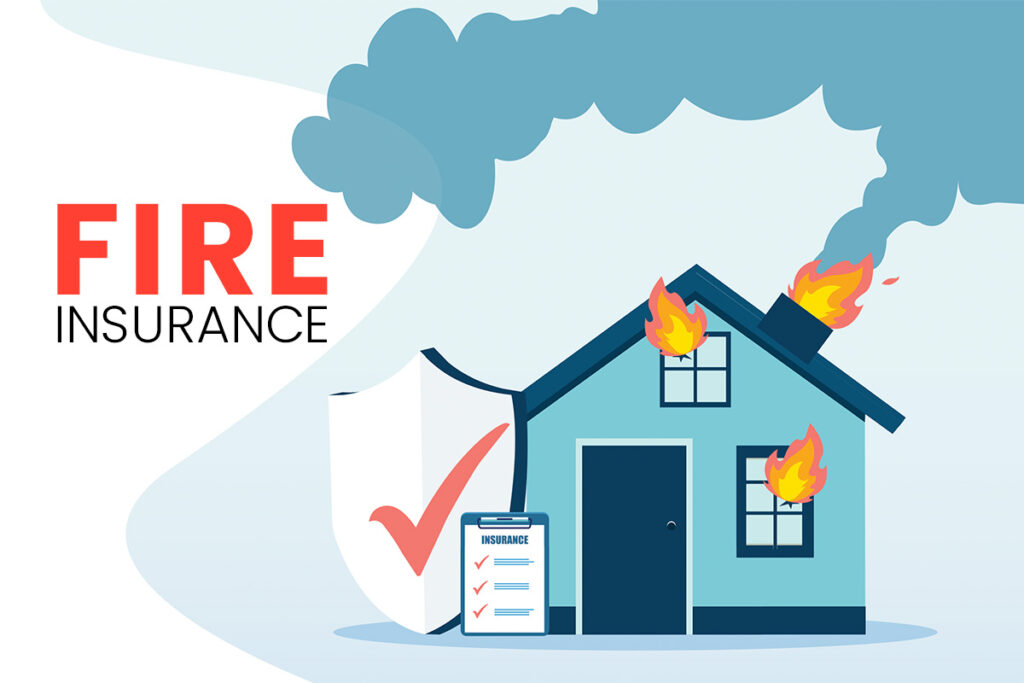Fire Insurance
Introduction
Fire insurance is a shield that protects you against the financial loss caused by fire. It’s like having a safety net for your home or business. Imagine a fire breaks out, damaging your property or belongings. Without fire insurance, you could be left facing hefty repair or replacement costs. That’s where fire insurance steps in to lend a helping hand.

Understanding Fire Risks
Fires can happen unexpectedly, but many are preventable. It’s essential to recognize potential fire hazards around your property, like faulty wiring, flammable materials, or kitchen appliances. Common causes of fires include electrical faults, cooking mishaps, or even carelessness with candles. By understanding these risks, you can take steps to minimize them and keep your surroundings safer.
Types of Fire Insurance Policies
Fire insurance comes in various forms to suit different needs. Basic fire insurance covers damages directly caused by fire, while comprehensive fire insurance extends coverage to other risks like theft or vandalism. Special perils fire insurance offers even broader protection, including natural disasters like earthquakes or floods.
Coverage and Exclusions
Fire insurance typically covers damages to your property, personal belongings, and even additional living expenses if you’re temporarily displaced due to fire damage. However, it’s essential to understand what isn’t covered, such as intentional acts of arson or neglecting maintenance responsibilities.
Determining Coverage Needs
To ensure you have adequate coverage, assess the value of your property and belongings accurately. Consider factors like property size, construction materials, and the value of your possessions. Additionally, evaluate potential risks specific to your location, such as wildfire-prone areas or regions prone to severe weather events.
Choosing the Right Fire Insurance Policy
Selecting the right fire insurance policy involves weighing various factors, including coverage limits, deductibles, and premiums. It’s crucial to compare different policies and choose one that aligns with your budget and coverage requirements.
Premiums and Payment Options
Premiums for fire insurance are determined based on factors like property value, location, and risk factors. Insurers may offer flexible payment plans to accommodate your budget, allowing you to pay premiums monthly, quarterly, or annually.
Filing a Fire Insurance Claim
In the unfortunate event of a fire, filing a claim promptly is crucial. Take necessary steps to ensure your safety and document the damages thoroughly. Provide all necessary documentation, such as photos, receipts, and eyewitness accounts, to support your claim and expedite the process.
Tips for Fire Prevention and Safety
While fire insurance provides financial protection, prevention is key to avoiding loss and damage. Implement fire safety measures like installing smoke detectors, keeping fire extinguishers handy, and practicing safe cooking habits. Educate yourself and your family about fire safety protocols to minimize risks.
Conclusion
Fire insurance serves as a vital safety net, offering financial protection against the devastating effects of fire damage. By understanding fire risks, choosing the right insurance policy, and prioritizing fire prevention measures, you can safeguard your property and belongings. Remember, investing in fire insurance is not just about protecting assets—it’s about securing peace of mind for you and your loved ones.